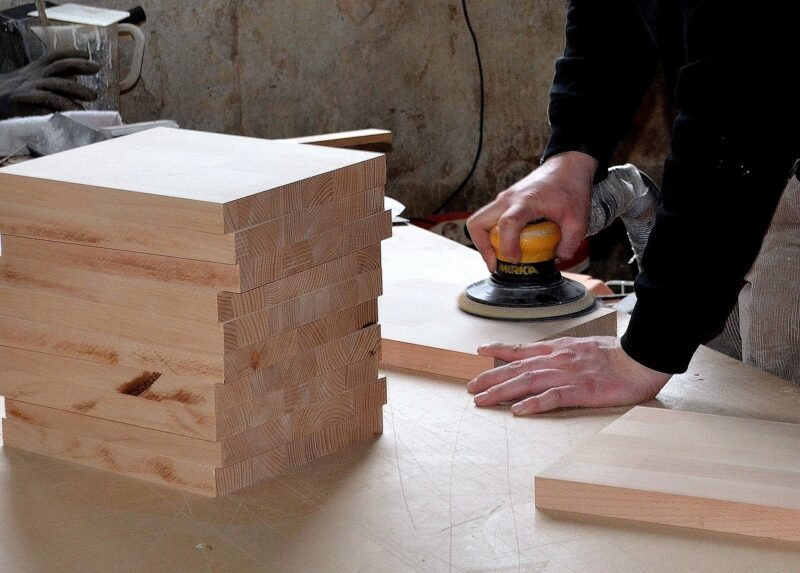Introduction
Air sanders, a powerful tool in the world of DIY projects, home improvements, and even professional construction, are a significant component when it comes to the process of creating a smooth, finished product. They are small, handheld devices that endow individuals with the power to transform rugged, rough surfaces into things of splendor. However, as is the case with any powerful tool, the importance of operating it safely cannot be underestimated. Therefore, this article will not only introduce the usage and capabilities of air sanders but will also amply highlight the vital necessity of taking safety precautions and correctly following operational procedures.
Understanding Air Sanders: A Closer Look
Air sanders are ingeniously designed devices that make use of compressed air as their power source. The compressed air is efficaciously converted into rotational motion, which in turn powers the sanding disc or pad creating a sanding effect. The adjustable speed control allows for flexibility and precision, vital factors for different tasks and surface types.
Various types of air sanders are available in the market, and each serves a unique purpose. From straight-line sanders, perfect for flat surfaces and loved for their high speed and efficient sanding capability, to random orbital sanders which offer a swirl-free finish, thanks to their random sanding motion. There are also dual action or DA sanders that offer both orbital and straight-line sanding modes. Depending on the job at hand, the choice of sander can greatly affect the final output.
Preparing to Use an Air Sander: Setup Guide

Setting up an air sander involves a multi-step process that begins with selecting the right sandpaper grit rating for your project. Lower grit ratings (60-100) are suitable for removing paint or varnishes, while higher ratings (150-180) are ideal for giving surfaces a smooth finish. Once selected, the sandpaper needs to be properly installed on the sander’s pad, ensuring it lies flat and is secure.
Understanding the manufacturer’s guide cannot be overemphasized as it contains model-specific information that is crucial in achieving optimal results. This includes insightful guidelines on using and maintaining the device correctly. It pays significantly to spend a few minutes understanding this manual before you start the process.
Safety First: The Essentials
When it comes to working with air sanders, safety must never be compromised. Essential items like protective eyewear, gloves, and ear protection must be worn at all times during operation. These devices generate a great deal of noise and can often cause tiny debris particles to scatter, hence the need for such precautions.
Maintaining a well-ventilated workspace is equally important, as it helps to reduce the dust levels in the air, making it safer to breathe. Moreover, after usage, the air sander must be handled and stored safely. Most models come with specific instructions in this respect and adhering to them goes a long way in preventing unprecedented accidents.
Operating Your Air Sander: Best Practices
Getting professional results from your air sander derives from the optimal operation. Things like ensuring the right pressure is used; too much pressure can prematurely wear the sanding disc and too little may not give desired results. The speed must be adjusted as per the material you are working on. Following the correct direction, usually moving with the grain of the wood, ensures a smoother finish.
Careful handling and regular maintenance of your air sander will ensure a more extended period of usage. This includes regular cleaning after use, inspection of the sanding pad, and timely replacement when needed.
Common Mistakes and How to Avoid Them
Mistakes during air sander operations can range from simple errors, such as forgetting to don safety equipment, to more complex ones like applying too much pressure, resulting in irregular or marred surfaces. Understanding how to keep your work neat, such as dusting off residual debris, can drastically reduce your chances of making errors.
In addition, avoid forceful pushing or dragging of the sander; instead, use a gentle back-and-forth motion. Remember to let the sanding pad do the work, this way, you minimize potential damage to both the tool and the workpiece.
Pitfalls of Ignoring Safety Guidelines
Ignoring safety measures can lead to accidents, injuries, and long-term health issues. For instance, without protective eyewear, the fine dust or particles generated during sanding can get into your eyes causing discomfort and potentially more serious injury. Furthermore, without proper ventilation, prolonged exposure to dust can lead to respiratory issues.
A neglected example is the case of a DIY enthusiast who suffered serious hand injuries when he failed to turn off his air sander before changing the sandpaper. This demonstrates how tremendously important it is to follow safety guidelines.
Conclusion
The key to mastering the use of air sanders not only lies in understanding the ins and outs of the tool but also in distinguishing the paramount importance of safety and guideline adherence. By combining these elements, one can confidently navigate their way through any DIY project, home improvement task, or professional construction project with ease, efficiency, and a safety-first approach. Aim for smooth surfaces, but smoother operations without any hitches by making the most of your air sander.
